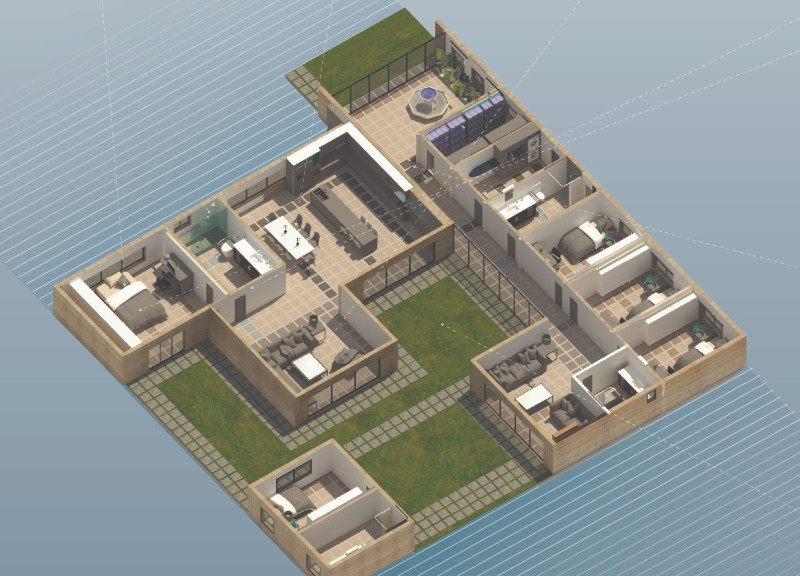5 key facts about this project
The Home for the Visually Impaired, known as Blind Bandit, is located in Runda, Nairobi, Kenya. It addresses the specific needs of visually impaired residents while embracing sustainable building practices. The design combines biophilic principles with accessibility features, creating an environment that supports the well-being of its users.
Biophilic Beauty
The design emphasizes biophilic beauty, integrating elements of nature into the living space. It utilizes stabilized rammed earth as the main building material, providing a direct connection to the surrounding landscape. This choice supports structural strength and offers thermal mass for better indoor comfort. With varied ceiling heights, the spaces feel different yet inviting, enhancing the sensory experience for residents.
Climate Comfort
Climate comfort plays a crucial role in the overall design. A water fountain, sourced from recycled water and powered by solar energy, serves multiple purposes. It acts as a cooling feature while offering a soothing sound that helps residents navigate their environment. The gentle flow of water creates a peaceful ambiance, emphasizing the connection between the home and the natural world outside.
Accessibility
Accessibility is a key focus throughout the design, enabling residents to move independently and safely. Tactile flooring and user-friendly shelving are strategically placed to ensure that everyday tasks are easier. The layout includes both common areas for social interaction and private spaces for quiet moments, catering to various needs. This organization supports not only the physical aspects of living but also a sense of community among residents.
User-Centric Design
The arrangement of spaces encourages smooth movement, with pathways that guide residents through the different areas of the home. Generous natural light flows in through well-placed windows, enhancing visibility and creating a welcoming atmosphere throughout the day. By balancing open communal spaces with intimate private areas, the design fosters a supportive environment where residents feel secure and comfortable.
Thoughtful details, such as the choice of materials and the way light interacts with the spaces, contribute to a rich sensory experience. Each element is carefully considered to encourage independence while fostering a connection to nature. The result is a home that meets the practical needs of visually impaired users while creating a nurturing living environment.



















































